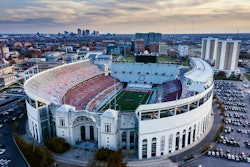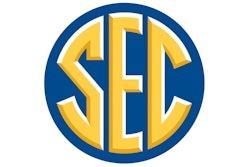|
Copyright 2013 The Washington Times LLC All Rights Reserved The Washington Times |
|
September 12, 2013 Thursday
|
|
C, SPORTS; Pg. 1
|
|
837 words
|
| Oklahoma State scandal further reveals NCAA flaws |
|
By Nathan Fenno THE WASHINGTON TIMES
|
|
Irony is buried in the 417 pages of the NCAA's Division I manual. An upside-down world unfolds there. Guidelines to write a letter to a recruit - don't think of using a sheet of paper larger than 8 ½ by 11 inches and, for the love of amateurism, keep the ink black - dwarf regulations to address concussions. Athletes are allowed to start their own business, as long as they don't use their "name, photograph, appearance or athletics reputation." Their own ideas, presumably, are permitted. And mixed with high-minded legislative blathering about T-shirts, trading cards and bagels is Rule 11.3.2.3: "An institution may permit an outside individual, group or agency to supplement an athletics department staff member's salary with a direct cash payment in recognition of a specific and extraordinary achievement." Think about that for a minute. The same behavior that would bring down the finger-wagging wrath of the NCAA and imperil the eligibility of any student-employee, er, -athlete is just fine for coaches, administrators, trainers, equipment managers, mascots, ushers, whoever. That's one more reason why the real scandal unfolding around Oklahoma State University's football team has nothing to do with $500 handshakes, cash-stuffed socks and prepaid debit cards that Sports Illustrated reports filled the pockets of players from 2001 to 2011. The scandal is the system of college athletics that's as upside down as the manual. At Oklahoma State University, President V. Burns Hargis collects $350,000 in annual salary in addition to club dues and $20,000 for a car. Mike Gundy, the university's loud-mouthed football coach, earns $2.85 million this season with an additional $600,000 tucked away for retirement. And players receiving cash used for food and movie tickets, not even tricked-out Escalades, is a scandal? No, this is one more symptom of the NCAA's creeping failure. The organization clings to the blown-apart notion of amateurism, playing a game of semantics and intellectual dishonesty that bars athletes from making a dime off their ability and caps the labor expenses at the cost of a scholarship. The NCAA doesn't limit Hargis or Gundy's compensation. Why are athletes different? The excuse is because they're students in addition to athletes. Any music major on scholarship, for instance, can play a coffeehouse or sell their music online to bring in a few dollars. But athletes can't do any of that because of a made-up ideal while, all the while, their likenesses appear in $59.95 video games and universities hawk their jerseys and pictures. All this is done in the name of protection. For their own good. Really. It's right there in the manual that governs this multibillion-dollar industry: "Student-athletes should be protected from exploitation by professional and commercial enterprises." Except that such benevolent "protection" actually fuels brushfires like the one at Oklahoma State. Take the athletic scholarships the NCAA points to as ample compensation. In virtually every case, they're one-year deals, renewable at the university's whim. A study by Drexel University and the National Collegiate Player's Association revealed a $3,222 gap between the average "full" scholarship for a football or basketball player and the actual cost of attendance. So, an athlete is supposed to keep pace with the day-to-night requirements of his sport (with the coach holding the scholarship hammer over his career), stay eligible and scrape together cash to make up the financial difference? What 19-year-old in that situation wouldn't accept a $100 handshake? And, really, what is harmed by removing the artificial limits on outside compensation other than admitting amateurism is a sham used to prop up a sprawling bureaucracy? All the while, the arms race of over-the-top athletics facilities and budget-sagging salaries for the men and women orchestrating the industry continues. Back in 1950, then-NCAA President Karl Leib warned about the perils of amateurism that wasn't, well, amateur enough. They called this "pure amateurism." That central tenant of the NCAA's faith shifts over the decades to fit the organization's whims. Universities pushed back against the NCAA's Sanity Code that allowed universities to provide only need-based financial aid to athletes, banned paying for campus visits and, at one point, attempted to ban all off-campus recruiting. "We shall have chaos worse than anything we ever dreamed of," Leib warned the group's convention about the code's imminent banishment. "There will be fewer powers in command against which the others cannot compete. If athletes are obtained on the open market, I pity the schools who cannot bid high." The Joe McCarthy-style fear-mongering could be mistaken for a modern NCAA histrionics about the dangers of allowing athletes to capitalize on their name and gifts. Hargis can. Same with Gundy. And the same behavior that amounts to a national scandal for a college athlete is perfectly acceptable for his coach? That's not a scandal. That's the NCAA. |
|
September 12, 2013
|
Terms and Conditions Privacy Policy



































